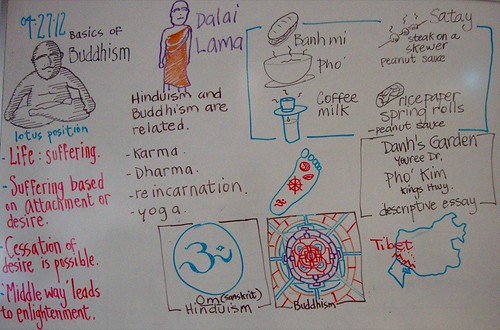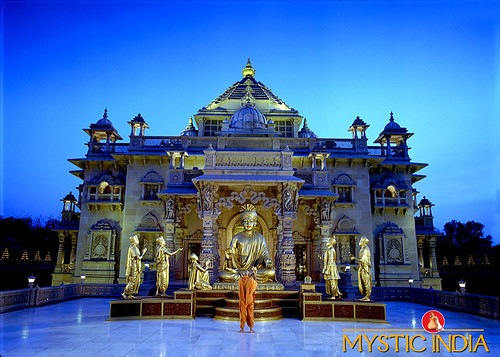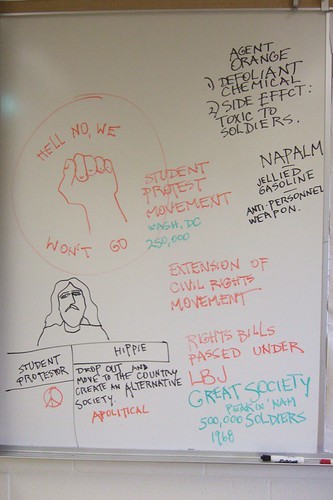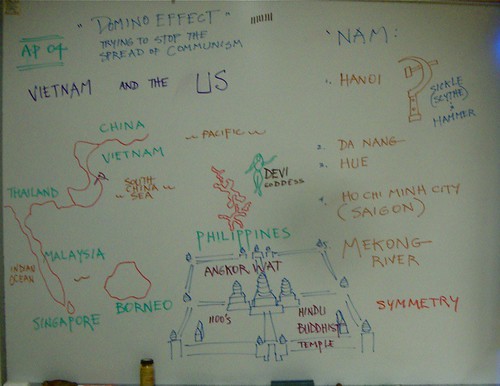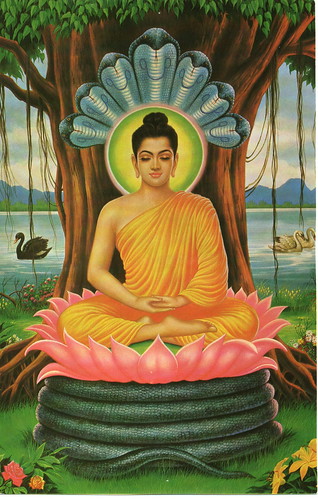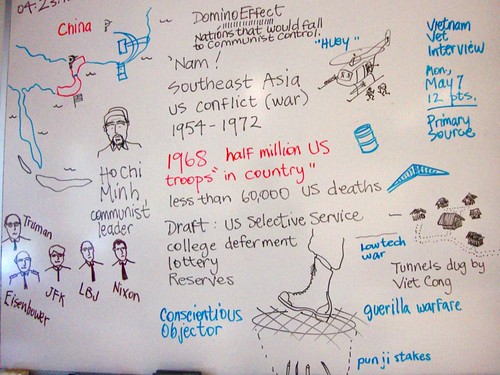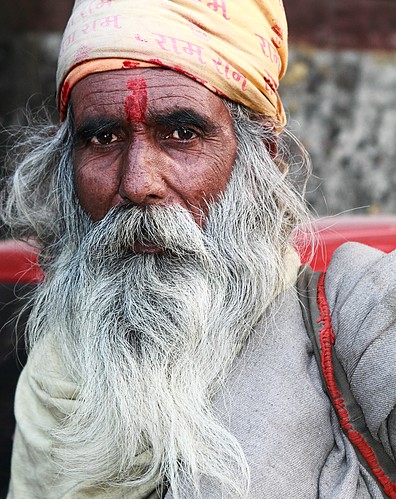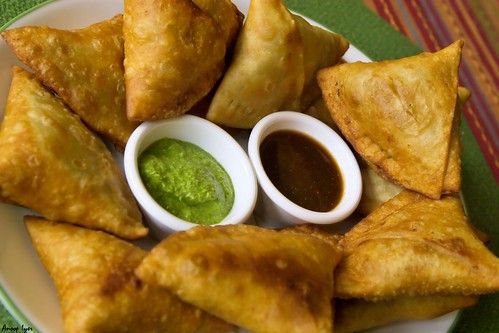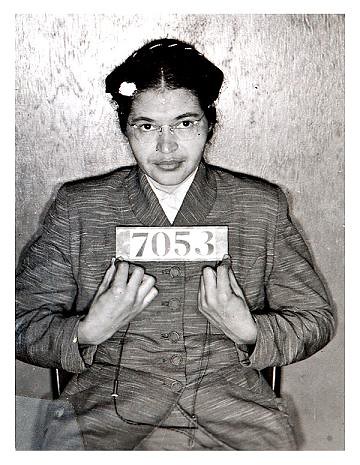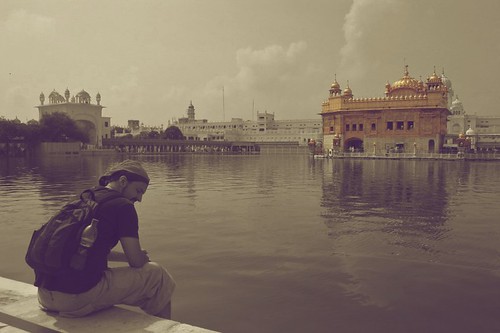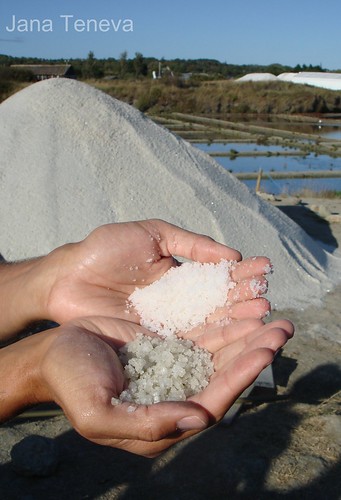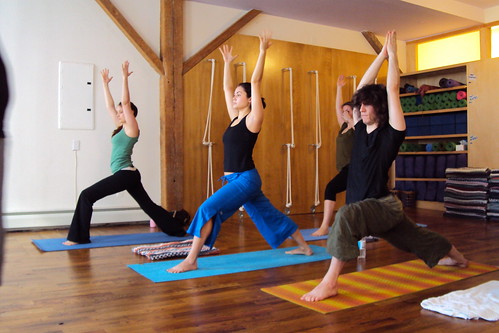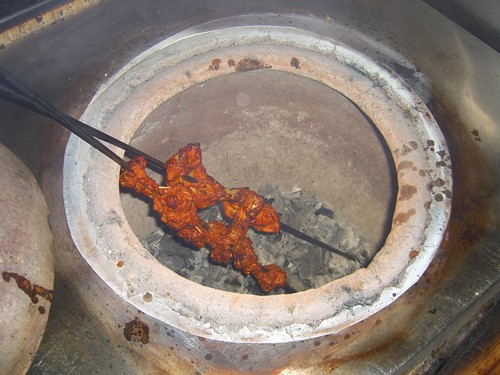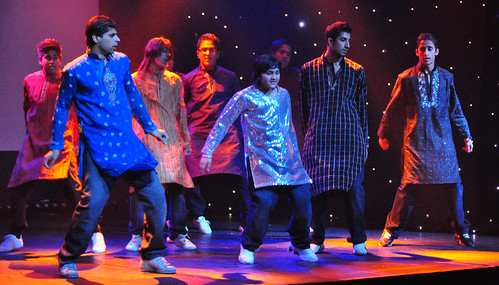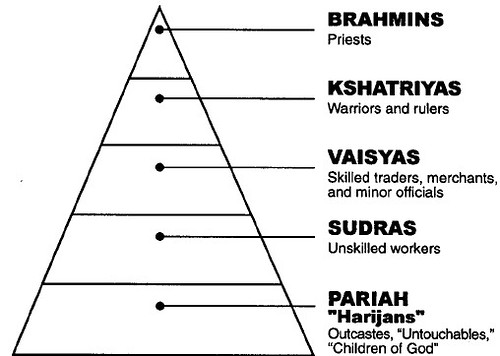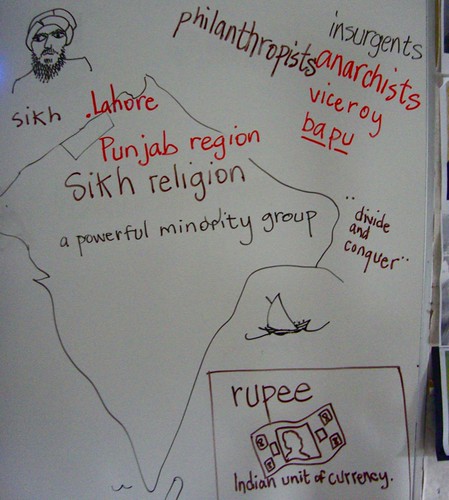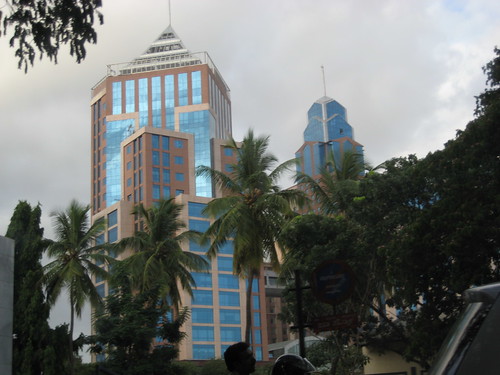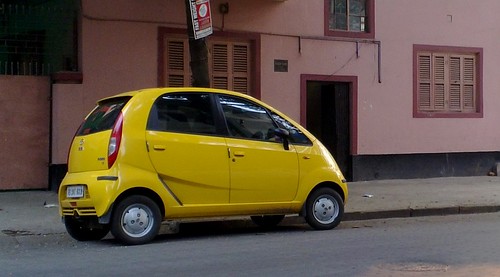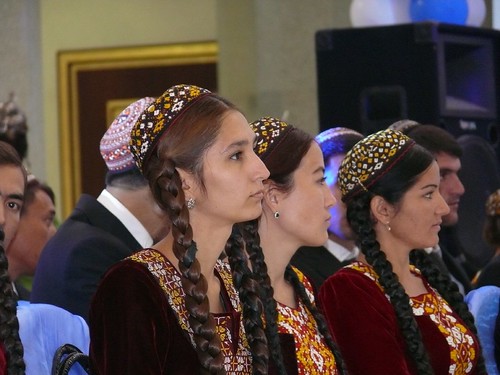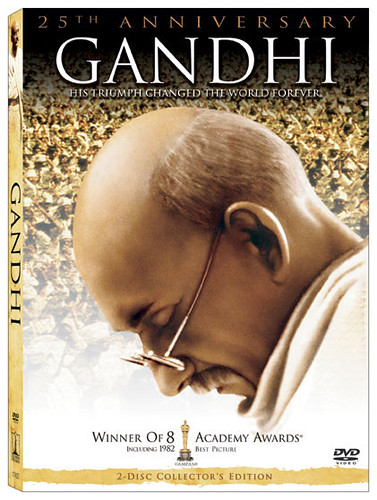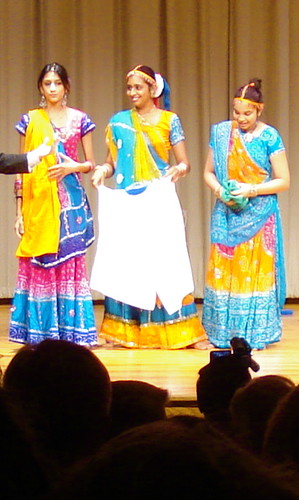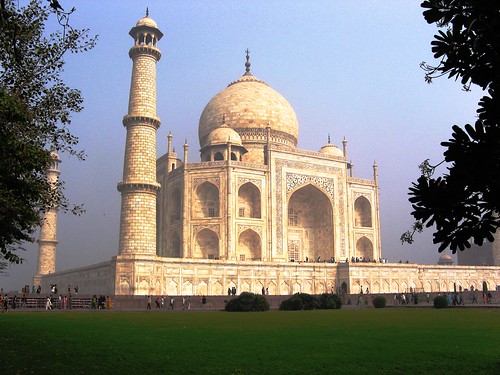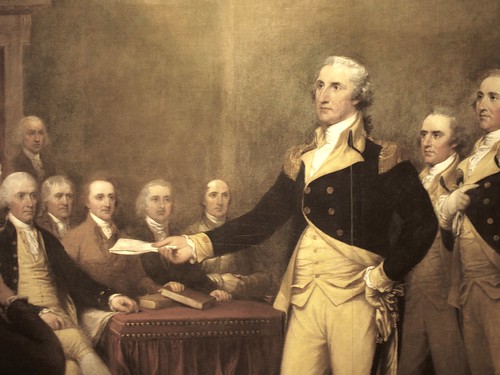Maṇḍala is a Sanskrit word meaning "circle." In the Buddhist and Hindu religious traditions their sacred art often takes a mandala form, says Wikipedia.
The basic form of most Hindu and Buddhist mandalas is a square with four gates containing a circle with a center point. Each gate is in the shape of a T.[1][2] Mandalas often exhibit radial balance.[3]
These mandalas, concentric diagrams, have spiritual and ritual significance in both Buddhism and Hinduism.[4][5] The term is of Hindu origin.
In common use, mandala has become a generic term for any plan, chart or geometric pattern that represents the cosmos metaphysically or symbolically, a microcosm of the Universe from the human perspective.
The Sand Mandala is a Tibetan Buddhist tradition involving the creation and destruction of mandalas made from colored sand.
A sand mandala is ritualistically destroyed to symbolize the Buddhist doctrinal belief in the transitory nature of material life.
Monday, April 30, 2012
Mandala: a circle that reflects the art and beliefs of Hindus and Buddhists
Buddhism, Tibet, the mandala, the Dalai Lama, Om and Satay
From pbs.org, a commentary on the Four Noble Truths of Buddhists:
The Four Noble Truths comprise the essence of Buddha's teachings, though they leave much left unexplained. They are the truth of suffering, the truth of the cause of suffering, the truth of the end of suffering, and the truth of the path that leads to the end of suffering. More simply put, suffering exists; it has a cause; it has an end; and it has a cause to bring about its end.
The notion of suffering is not intended to convey a negative world view, but rather, a pragmatic perspective that deals with the world as it is, and attempts to rectify it.
The concept of pleasure is not denied, but acknowledged as fleeting. Pursuit of pleasure can only continue what is ultimately an unquenchable thirst. The same logic belies an understanding of happiness. In the end, only aging, sickness, and death are certain and unavoidable.
The Four Noble Truths are a contingency plan for dealing with the suffering humanity faces -- suffering of a physical kind, or of a mental nature.
The First Truth identifies the presence of suffering. The Second Truth, on the other hand, seeks to determine the cause of suffering. In Buddhism, desire and ignorance lie at the root of suffering. By desire, Buddhists refer to craving pleasure, material goods, and immortality, all of which are wants that can never be satisfied. As a result, desiring them can only bring suffering.
Ignorance, in comparison, relates to not seeing the world as it actually is. Without the capacity for mental concentration and insight, Buddhism explains, one's mind is left undeveloped, unable to grasp the true nature of things. Vices, such as greed, envy, hatred and anger, derive from this ignorance.
The Third Noble Truth, the truth of the end of suffering, has dual meaning, suggesting either the end of suffering in this life, on earth, or in the spiritual life, through achieving Nirvana.
When one has achieved Nirvana, which is a transcendent state free from suffering and our worldly cycle of birth and rebirth, spiritual enlightenment has been reached.
The Fourth Noble truth charts the method for attaining the end of suffering, known to Buddhists as the Noble Eightfold Path. The steps of the Noble Eightfold Path are Right Understanding, Right Thought, Right Speech, Right Action, Right Livelihood, Right Effort, Right Mindfulness and Right Concentration. Moreover, there are three themes into which the Path is divided: good moral conduct (Understanding, Thought, Speech); meditation and mental development (Action, Livelihood, Effort), and wisdom or insight (Mindfulness and Concentration).
Friday, April 27, 2012
India review quiz
1. Hindi greeting: a) Namaste’ b) Ni hau c) Moshimoshi d) Salaam aleikum e) Shalom f) Yo.
2. Hindi is the culture and religion, Hindu is the language. T / F
3. According to the RMQRWA, India’s population is about a) 999 million b) 1.1 billion c) 1.53 billion d) 2.53 billion.
4. People who study populations and make predictions about population changes: a) anthropologists b) demographers c) historians d) graphologists.
5. Civilization in Central Asia began in the __ river basin, according to World Book. a) Indus b) Ganges c) Nile d) Tigris & Euphrates.
6. Mt. Everest lies on the borders of a) Nepal & China b) India & China c) China & Tibet.
7. Which has a greater metropolitan population? a) Mumbai b) Kolkata c) New York City d) Beijing
8. Sanskrit, Bengali, Gujarati, Kashmiri and Punjabi are __. a) regions b) languages c) types of cuisine d) Hindu gods.
9. India has approximately half the land area of the US but more than 3 times the US’ population.
T / F
10. The 2 principal religions of India: a) Christianity, Islam b) Islam, Hindu c) Hindu, Jewish
d) Hindu, Christian e) Sikhs, Hindus.
11. The famous spice mixture of Indian cooking: a) curry b) tandoori c) yogurt d) chili powder.
12. Not one of the three Islamic nations on our current map: a) Bangladesh b) Pakistan c) Afghanistan d) Nepal.
13. The historic name for Mumbai: __ a) Calcutta b) Kolkata c) Ceylon d) Bombay e) Agra.
14. The multi-stringed instrument that gives a signature sound to the music of India: a) oud b) sitar c) tambourine d) bindi e) harmonium.
15. Some 60 years ago India was partitioned so that Muslims would have a home away from the antagonistic Hindus. Today the formerly Indian Muslims primarily live in Pakistan or China. T / F
16. “Going to a movie tonight? Put a garland of jasmine round your neck and a __ on your forehead.” a) samsara b) ganesh c) bindi d) sitar.
17. The science behind an understanding of the Himalayas: a) vulcanology
b) demography c) plate tectonics d) archaeology.
18. Pakistan, Bangladesh, Afghanistan: a) Star & crescent b) Om
c) mandala d) swastika.
19. Associated with Hindu weddings: a) guru b) Shah Jahan
c) henna d) curry e) Delhi.
20. Cumin, cardamom, coriander, fenugreek, mace, dill: a) henna b) Lord Ganesh c) curry d) bindi.
21. Hinduism is the world’s __ religion. a) oldest b) most populous
c) least Christian d) most diffused (spread out).
22. Significant Hindu populations are found in a) Mexico, Cuba, Bahamas
b) Pakistan, Afghanistan, Iran c) Singapore, Fiji, Trinidad.
23. Dharma is about ethics and duties, while Karma is about action and subsequent reaction.
T / F
24. The most powerful cosmic spirit: a) Brahman b) Krishna c) Shiva d) Ganesh.
25. At a shrine or temple a Hindu may perform devotions called a) samsara b) puja c) om d) mantras.
26. Sitting with legs crossed and pulled up and partly into the lap:
a) Krishna’s feet b) Mandala c) Om d) lotus.
27. Sanskrit / Hindi word for “to yoke” or “to unite:”
a) mantra b) mandala c) yoga d) pranayama.
India answers:
1. a Namaste
2. F
3. b 1.1 B
4. b demographers
5. a Indus
6. a Nepal & China
7. a Mumbai
8. b languages
9. F
10. b Islam, Hindu
11. a curry
12. d Nepal
13. d Bombay
14. b sitar
15. F
16. c bindi
17. c plate tectonics
18. a star & crescent
19. c henna
20. c curry
21. a oldest
22. c Singapore, etc
23. T
24. a Brahman
25. b puja
26. d lotus
27. c yoga
Thursday, April 26, 2012
Danh's Garden and Pho Kim are Vietnamese restaurants in Shreveport - write about a visit and meal
In the photo, the delicious Vietnamese iced coffee milk from Danh's garden, 3312 Youree Dr.
More specialties to consider:
- Banh mi sandwiches from Pho Kim Restaurant, 530 KIngs Hwy.
- Thai chicken curry and Peanut chicken are favorites of my family at Danh's.
- Phở is a Vietnamese noodle soup, usually served with beef (phở bò) or chicken (phở gà).[1]
The soup includes noodles made from rice and is often served with Asian basil, mint leaves, lime, and bean sprouts that are added to the soup by the person who is dining.
The dish is associated with the city of Hanoi, where the first phở restaurant opened in the 1920s.
At the end of the civil rights movement young Americans began to protest the war in Vietnam
The movement against the involvement of the United States in the Vietnam War began in the U.S. with demonstrations in 1964 and grew in strength in later years.
The U.S. became polarized between those who advocated continued involvement in Vietnam ("Hawks"), and those who wanted peace ("Doves").
Many in the peace movement were students, mothers, or long-haired anti-establishment types, says Wikipedia.
Also involved were educators, clergy, academics, journalists, lawyers, physicians (such as Benjamin Spock and Justin Newlan), military veterans, and ordinary Americans.
Expressions of opposition events ranged from peaceful nonviolent demonstrations to radical displays of violence.
In 1967, Civil rights leader Martin Luther King led a march of 5,000 against the war in Chicago, Illinois. He was assassinated in 1968.
Also in 1967 400,000 people marched from Central Park to the UN building in New York City to protest the war, where they were addressed by critics of the war such as Benjamin Spock and Martin Luther King. On the same date 100,000 marched in San Francisco.
In 1968 the Tet Offensive was launched and resulted in much higher casualties and changed perceptions of the state of the war.
In 1969 crowds estimated up to half a million people participated in an anti-war demonstration in Washington, D.C. A similar demonstration was held in San Francisco.
Protests continued - against Nixon's bombing of N Vietnam - through 1972.
Angkor wat: ancient and vast temple complex in n Cambodia
Angkor Wat is a temple complex at Angkor, Cambodia, built in the early 12th century as a temple and capital city, says Wikipedia.
It was first Hindu, dedicated to the god Vishnu, then it became Buddhist.
It has become a symbol of Cambodia, appearing on its national flag, and it is the country's prime attraction for visitors.
Wednesday, April 25, 2012
Five presidents involved in Vietnam
Five presidents involved in Vietnam
Nixon, Kennedy, Johnson, Truman, Eisenhower
1. Pres associated with the first-ever dropping of an Atomic bomb.
2. Pres. who resigned from office rather than face impeachment.
3. Assassinated?
4. Two of the presidents were Vice-presidents who acceded to the presidency on the death of a pres.
5. This pres. was a 5-star general famous for leading forces to victory in Europe.
6. This pres. was a navy boat Capt in WWII and was decorated for bravery after an incident with a Japanese ship.
7. This pres. pushed Congress to pass a series of laws that amounted to the major civil rights legislation. That included the voting rights act, housing and education legislation.
8. Earlier presidents sent US troops as advisers. These 2 presidents sent combat troops to Nam.
9. This pres was pivotal in 'Nam: he sent 10,000 troops and moved the US into serious engagement in Southeast Asia.
10. This pres. explained that the Domino Effect was why we needed to fight in Nam.
1. Truman 2. Nixon 3. JFK 4. Truman (Roosevelt), Johnson (Kennedy)
5. Eisenhower 6. Kennedy 7. LBJ 8. LBJ, Nixon 9. JFK 10. Eisenhower
Attend Artbreak 2012 and get bonus points in social studies class
Take a photo of yourself at ArtBreak using your phone. Show it to me next week to get bonus points.
Enjoy the activities Fri - Sun, Ap 27 - 29, at the Spt Convention Center.
Tuesday, April 24, 2012
The Buddha: the Siddhartha Gautama quiz
1. The seer or wizard who attended the birth of Siddhartha predicted that he would become a __ or a holy man. a) king b) beggar c) soldier d) sadhu.
2. If Siddhartha Gautama had been raised as a Hindu, he would have known and practiced the devotion called yoga. T / F
3. The king decided to make his kingdom a place of perfect peace and contentment. He banned all people who were __ . a) smarter than Siddhartha b) from other, competing religions c) foreigners d) suffering.
4. Siddhartha's father arranged a marriage but Siddhartha refused to cooperate. Deep inside, he felt a special calling. T / F
5. When he ventured outside the kingdom Siddhartha encountered an ascetic, or __ . a) fakir b) Shah c) muezzin d) spastic.
6. With his wife and son by his side, Siddhartha became a wandering holy man, spending his days fasting and praying while being supported by the labor of his family. T / F
7. After several years of begging, praying and fasting, Siddhartha was in a state of extreme thinness. The word for skeletal thinness is __ . a) emaciated b) arabesque c) devotional d) castal.
8. Siddhartha realized that neither the way of luxury and comfort - his first state - nor the way of privation and self-denial - his second state - produced the ideal life. He discovered a third state of life that he called the __ way. a) perfect b) middle c) holy d) sacred.
9. Siddhartha was referred to as The Buddha, or enlightened one. He presented himself to his followers as a __ . a) god b) enlightened man c) lowly man d) wanderer.
Monday, April 23, 2012
Magnet geography / intro to the Vietnam Conflict
High tech vs low tech warfare as the US tried to contain the spread of communism in the 1950's and 60's.
One-page interview with Vietnam Conflict Veteran(s) due Mon, May 7
One of the most rewarding projects of first-year social studies, according to many students and parents, is the Vietnam Veteran Interview.
The most difficult part of the project is finding a veteran who can be interviewed. I will expect you to get help from your parents, extended family and friends and perhaps your minister, youth leader or sports coach.
My goal is to see my students sit down across the table from a veteran of a US war in Asia. So, in truth, if you can find a veteran of the Korean conflict (usually older than Viet vets) or even the rare veteran of WWII in the Pacific, you can substitute.
Vietnam is part of America's history that can guide our thinking in regards US involvement in Iraq and Afghanistan.
These Vietnam veteran questions are designed to create a low-stress interview. The primary reason for this interview is to give you experience in using a Primary Source. The material you gather will not come from a book or online entry; it will come from a person who was an eye witness. You will be gathering a bit of evidence as a student historian.
1. Name and your service branch?
2. Year(s) you served in Vietnam?
3. Your responsibilities in the service while in ‘Nam.
4. Locations you visited in Vietnam. In which place did you stay the longest?
5. The geography of the Vietnam you observed.
6. Climate?
7. Describe the people of Vietnam, both physically & psychologically.
8. Changes in your attitude toward the US in Vietnam. (optional)
9. What should teens learn about the conflict?
10. Your favorite movie or book about ‘Nam? (optional)
Type in 14 pt Arial. Snappy title, documentation.
Add a map of Vietnam.
12 pts
Due Mon, May 7.
If your interview runs short, please fill out the page with an additional interview (or 2) from an online source.
Friday, April 20, 2012
India / quiz questions
Gandhi in Mumbai
1. Gandhi's first protest activities were actions against the government in __ . a) Kenya b) India c) Sri Lanka
d) South Africa.
2. Home Rule was the slogan of the Congress Party of India. It meant that the British should
a) rule from London b) give representation in Parliament c) leave India d) leave Delhi.
3. Gandhi was raised as a a) Sikh b) Muslim c) Christian
d) Hindu.
4. The religious minority of India originating in the Punjab region: a) Sikh b) Muslim c) Christian d) Hindu.
5. Gandhi began his protest activities in India soon after the end of a) WWI b) WW2 c) the US Civil Rights Movement
d) Great Depression.
6. The capital of India: __ .
Gandhi in Mumbai
1. Gandhi's first protest activities were actions against the government in __ . a) Kenya b) India c) Sri Lanka
d) South Africa.
2. Home Rule was the slogan of the Congress Party of India. It meant that the British should
a) rule from London b) give representation in Parliament c) leave India d) leave Delhi.
3. Gandhi was raised as a a) Sikh b) Muslim c) Christian
d) Hindu.
4. The religious minority of India originating in the Punjab region: a) Sikh b) Muslim c) Christian d) Hindu.
5. Gandhi began his protest activities in India soon after the end of a) WWI b) WW2 c) the US Civil Rights Movement
d) Great Depression.
6. The capital of India: __ .
Gandhi in Delhi
1. Traditional sweet scent of India packaged as a garland: a) gardenia b) rose c) lilies d) jasmine.
2. South Africans have numerous derogatory terms for Indians. Not among them: a) Sammy b) coolie c) kaffir d) pachuco.
3. On the train in South Africa Gandhi quotes a book of __ literature. a) Christian b) Hindu c) Muslim d) Sikh.
4. Gandhi uses the phrase "children of __ " to emphasize the incorrectness of racist laws. a) Brahma b) Allah c) God.
5. Car manufacturing company that produces a cheap city car: a) Nano b) Tata c) Momo d) Bapu.
6. Nefarious crop emphasized by the British in India - to be sold to the Chinese. a) indigo b) tobacco c) saffron d) opium.
7. City on the Bay of Bengal: a) Delhi b) Agra c) Mumbai d) Kolkata.
8. City on the Arabian Sea: a) Delhi b) Agra c) Mumbai d) Kolkata.
9. City called the Silicon Valley of India: a) Delhi b) Agra c) Mumbai d) Bangalore.
Gandhi in South Africa
1. Gandhi's life spanned the 19th and 20th centuries. T / F
2. Gandhi studied to be a barrister, which is a Britishism for: a) lawyer b) professor c) business man d) clergyman.
3. South Africa was a European colony at the turn of the century. It is part of the empire built by the a) British b) French c) Hindus d) Muslims.
4. In all his pronouncements, Gandhi encourages ethnic unity. That would be between the a) castes b) major social organizations c) armies d) governments.
5. Gandhi declares that being raised in a crossroads region gave him an unusual perspective on religion. He lived near a) Delhi b) Bay of Bengal c) Himalayas d) Arabian Sea.
6. What is the great social taboo of India that Gandhi wanted to change?
a) Hindu vs. Muslim b) the caste system c) the class system d) British vs. Indians.
7. Gandhi felt that the beliefs of Christianity might help people understand racism. T / F
8. Gandhi understood poverty and accepted it as inevitable in India.
T / F
9. Gandhi was not assasinated; he was assassinated. T / F
1.t 2.a 3.a 4.a 5.d 6.b 7.t 8.t
1. The Taj Mahal was built about the year __ .
2. Its construction was commanded by the emperor called the __ Jahan.
3. Jahan was the Mughal - or Mogul - emperor of ___ India.
a) northern b) eastern c) southern d) western.
4. The design of the Taj reflects a particular religion: a) Islam b) Judaism c) Hinduism d) Jainism.
5. It was built of white __ (type of stone) for Mumtaz Mahal.
6. A building that is a tomb is called a __. a) masala b) malformed c) mausoleum d) mandible.
7. The designers of the Taj were from the nation of __ . a) Persia b) Afghanistan c) Arabia.
8. There are three items of the Taj Mahal complex that identify the Shah's culture as Islamic: the mosque, the Arabic inscriptions and the towers called __ .
9. The decorative designs on the walls are called __.
10. Aside from the decorated caskets of the emperor and his wife, the interior of the Taj Mahal is empty. T / F
11. In the final chapter of his life the emperor's son, Aurangzeb, made sure his father was __.
1.1600
2.shah
3.a
4.a
5.marble
6.c
7.a
8.minarets
9. arabesques or calligraphy
10. t
11. imprisoned
Thursday, April 19, 2012
Samosas: the snack food of India and Central Asia
Time and labor intensive, the Samosa is delicious. It is full of spices and thus takes quite a bit of time to make.
Vegetable Samosa FIlling
1 Potato finely diced (5 to 10 mill cubes)
1 carrot finely diced - as above
2 cloves of crushed garlic.
1 Onion finely chopped
1 Cup of frozen peas
1 tblspn vegetable oil
2 tspn curry powder or your own spices according to taste
Salt, Pepper to taste.
100ml of vegetable stock.
Heat the oil in a frying pan, add the onion and garlic, mix in the spices and fry until soft. Add the vegetables, seasoning and stir well until coated. Add the stock, cover and simmer for 30 minutes until cooked.
You don't have to make your own pastry. You can simply buy some ready-made pastry from the shop. For samosas you want to fry, use Filo Pastry and for samosas you want to cook in the oven use Puff Pastry.
Civil Rights Movement in the US was based on Gandhi's principles of non-violent defiance of unjust laws
Create a US Civil Rights Movement timeline, using 5 items from the 1950's through the 60's.
Explain each incident by 2 sentences. Cite your source(s).
Include a colorful map that shows the location of the events you chose.
Add a snappy title.
10 pts. Due Wed/Th.
Wednesday, April 18, 2012
Sadhu in Nepal
In Hinduism, sādhu (“good; good man, holy man”) denotes an ascetic, wandering monk.
Although the vast majority of sādhus are yogīs, not all yogīs are sādhus. The sādhu is solely dedicated to achieving mokṣa (liberation), the fourth and final aśrama (stage of life), through meditation and contemplation of brahman. Sādhus often wear ochre-colored clothing, symbolizing their sanyāsa (renunciation), Wikipedia.
This way of life is open to women; the female form of the word is sādhvī साध्वी.
Amritsar. India, center of the Punjab region
The Amritsar massacre, says Wikipedia, took place in the Jallianwala Bagh public garden in the northern Indian city of Amritsar, and was ordered by Brigadier-General Reginald E.H. Dyer.
On Sunday 13 April 1919, Dyer was convinced that a major insurrection was at hand. He banned all meetings, and hearing a meeting of 15,000 to 20,000 people had assembled he marched his fifty riflemen to a raised bank and ordered them to shoot at the crowd which included men, women, and children. Dyer kept the firing up for about ten minutes.
Official Government of India sources estimated the fatalities at 379, with 1,100 wounded. The casualty number estimated by the Indian National Congress was more than 1,500, with approximately 1,000 killed.[1]
Dyer was removed from duty and forced to retire, but he became a celebrated hero in Britain among people with connections to the British Raj.
Tuesday, April 17, 2012
The life of Siddhartha Gautama
Most historical depictions of Siddhartha Gautama’s conception and birth show his mother dying during or shortly after childbirth, and a seer, Asita, announcing that the young price would be either a great king or a great holy man.
Gautama’s father shielded his son from religion and human suffering in hopes that Gautama would indeed grow to be a great king rather than a holy man, says fundamentalbuddhism.com.
Despite predictions that Gautama would be the Buddha while still a baby, his father arranged a marriage at the age of sixteen. Gautama married a cousin of the same age and produced a son. Despite being a wealthy prince for twenty-nine years, however, Gautama was not satisfied with his life and was generally unhappy.
At the age of twenty-nine, while wandering outside his palace, Gautama encountered an old crippled man, a diseased man, a decaying corpse, and an ascetic, or holy man. These sights are now referred to as the four heavenly messengers.
The inspiration of these four sights caused Gautama to leave his family, wealth, and inheritance behind and begin life anew as an ascetic in hopes of ending the suffering of old age, disease, and death.
Despite meditation and deprivation, Gautama was unable to find the satisfaction and purpose he was looking for, but after nearly starving to death, remembered the peaceful bliss of a naturally concentrated state, and decided to purse this course.
Having made this discovery, Gautama left the asceticism and meditation behind and focused on The Middle Way, a path away from all extremes. History tells that Gautama then accepted some rice pudding, sat beneath a papal tree and refused to arise until he had discovered the truth.
At the age of thirty-five, or six years after beginning his quest, Gautama obtained enlightenment.
Gautama, now Buddha, then conceded to become a teacher and instructed monks and other followers in the ways of Nirvana, or the shedding of suffering, and bodhi, the pathway to enlightenment, among many other lessons and concepts.
Buddha was very clear to emphasize that he was not a god, but rather an enlightened man. He shared his teachings for another forty-five years, and then passed to Parinivana, or the final deathless state, fully abandoning the human body. His teachings have lived on, however, and become the fourth largest organized religion in the world today.
1930: civil disobedience in India via the Salt March
ZThe Salt March, also known as the Salt Satyagraha, began with the Dandi March on March 12, 1930, and was an important part of the Indian independence movement, says Wikipedia.
It was a direct action campaign of tax resistance and nonviolent protest against the British salt monopoly in colonial India, and triggered the wider Civil Disobedience Movement.
This was the most significant organized challenge to British authority since the Non-cooperation movement of 1920–22
Monday, April 16, 2012
Yoga, an ancient Hindu devotion that has become a way of conditioning, stress relief and holistic health for Westerners
Yoga, from the Sanskrit word similar to the English word "yoke." To yoke the mind and the spirit.
Hindu devotion has 5 forms. US yogis usu teach Hatha Yoga.
pranayama - breathing control.
asana - positions.
dharma - concentration; right purpose.
chakras - the body's energy centers.
yogi - expert practicioner.
guru - teacher or master.
diet - simple, fresh ingredients.
downward-facing dog asana
Friday, April 13, 2012
Tandoor Oven - Chandigarh, India
A tandoor is a cylindrical clay oven used in cooking and baking. Temperatures in a tandoor can approach 480°C (900°F), and it is common for tandoor ovens to remain lit for long periods to maintain the high cooking temperature, says Wikipedia.
Tandoori chicken is a roasted chicken delicacy which is marinated in a yogurt seasoned with garam masala, garlic, ginger, cumin, cayenne pepper, and other spices depending on the recipe. In hot versions of the dish, cayenne, red chili powder, or other spices give the typical red color.
Many regional varieties of flatbread, such as tandyr naan and afghan bread are baked in the tandoor.
Indie work: Bollywood and Hollywood or Gandhi and King
Indie essays . . .
Compare, using specific facts,
- Bollywood (2 items) and Hollywood (2)
- Protest events (2) led by Gandhi and Martin Luther King, Jr.(2 )
Describe
- Cooking an Indian recipe at home.
- Visit to a restaurant: Indigo or India's Restaurant.
Thursday, April 12, 2012
India's ancient rules for class organization: the caste system
The caste system is a system of social stratification and social restriction.
Caste is neither unique to Hindu religion nor to India; caste systems have been observed in other parts of the world, for example, in Muslim community of Yemen, Christian colonies of Spain, and Buddhist community of Japan, says Wikipedia.
Since 1950 the Indian government officially recognizes historically discriminated lowest castes of India such as Shudras and Untouchables as Scheduled Castes.[9][22] These Schedules Castes are sometimes referred to as Dalit in contemporary literature. In 2001, the proportion of Dalit population was 16.2 percent of India's total population.
Caste, claimed Gandhi, had nothing to do with religion. The discrimination and trauma of castes is the result of custom, whose origin is unknown, and whose origin one does not need to know to spiritually sense that this custom was wrong, that any caste system is harmful to the spiritual well being of man and economic well being of a nation.
Gandhi's modus operandi in social activism
Gandhi found success in social activism by using the precepts of the Christian church, British and American press and the British court system.
Sikhs and Gandhi
Gandhi vocab -
- Tata family: philanthropists
- insurgents - rebels
- rupee - Indian currency
- anarchists - radicals who believe that governments should be abolished.
- Viceroy - British governor of a colony.
- Bapu - Hindi for "papa"
- Amritsar and Lahore, centers of the Punjab region. Home of the Sikh people.
- Sikhs - religion similar to both Hinduism and Islam. Baptised Sikhs can also be recognized by a distinctively wrapped turban; uncut hair, beard and mustache; an iron/steel bracelet; a small sword in a gatra strap;, a type of special shorts that are all white; and a comb under turban, says Wikipedia.
Bangalore: city in the south of India that is the Silicon Valley of Central Asia
avigation, search
The Silicon Valley of India is a nickname of the Indian city of Bangalore. The name signifies Bangalore's status as a hub for information technology (IT) companies in India and is a comparative reference to the original Silicon Valley, based around Santa Clara Valley, California, a major hub for IT companies in the United States.
Microsoft, Dell and other companies employ thousands of highly-educated Indians in writing software and designing hardware.
Symbol of technology and manufacturing in a new and growing India: the Nano model by Tata Motors
The Tata Nano is an inexpensive, rear-engined, four-passenger city car built by the Indian company Tata Motors. It is aimed primarily at the Indian domestic market.
It has a top speed of about 65 to 70 mph. It gets better than 50 mpg. Costs around $3000.
Tata Motors of one of several significant companies established and operated by members of the Tata family. They are like the Rockefellers of India.
Monday, April 09, 2012
Turkmenistan: delegation from this Central Asian nation will visit geography classes on Tues, Ap 17
In an effort to learn more about the US educational system, a delegation from the Turkmenistan Youth & Civic Values Foundation will visit Mr Trudeau's geography classes on Tues, Ap 17.
The group, including an interpreter, will tour the campus and eat lunch in the cafeteria.
Their visit is being coordinated by Shreveport sociologist Sarah Lange. See the foundation web site and a Lange video about Turkmen people at http://www.tycvf.org/.
Gandhi, apostle of non-violent protest
Mohandas K Gandhi
- merchant caste
- 1869 - 1948
- assassinated by Hindu extremist
- Porbandor, birthplace on Arabian Sea
- London, law school
- South Africa, first 20 years of career
- married at age 13
- cosmopolitan: educated, broad-minded
- exploit: unfair use of someone
- British colony
- barrister
- dhoti, lunghi (longhi)
- derogatory terms: coolie, sammy, kaffir, colored man,
Goals
1. Eject the British from India.
2. Abolish the caste system.
3. Stop the violence between Hindu and Muslim.
Means
1. British courts and law.
2. Christian precepts.
3. British and American press / media.
- Sikh people: in the Punjab region.
- bindi - forehead decoration
Gandhi: "An eye for an eye only makes the whole world blind."
"If you are a minority of one, the truth is still the truth."
"Poverty is the worst form of violence."
1. The opening scene of the movie is a reenactment of Gandhi’s assassination. State 2 factors that make the murder a surprising one.
2. The next scene takes place in S. Africa when Gandhi was beginning his career as a barrister. What does his experience on the train say about British society?
3. When Gandhi meets with his colleagues in S. Africa he is shocked by the racism. What is Gandhi’s reaction?
4. During Gandhi’s first public meeting, he outlines his methods for fighting an unjust law. What is the outcome of his protest?
5. Gandhi meets a sympathetic English clergyman, and they walk through an impoverished and racist neighborhood. What book does Gandhi quote when they face a group of yahoos?
6. Life in the Gandhi ashram (a Hindi word for community) is an experiment. What is the great social class taboo he believes must be changed?
7. The Christian minister gives a sermon which supports Gandhi and his social protest. What is the reaction of the majority of attendees?
8. Compare the clothing of Gandhi to the dress of the other Indian leaders. What point was being made by Gandhi?
9. Describe the farming system established in India by British colonists.
10. Gandhi tells the American minister that he can do the most good by exiting the protest movement. Why did Gandhi push away this hard-working supporter?
11. Why does General Dyer massacre the gathering of Indian Sikhs in their non-violent meeting?
12. What are Gandhi’s 2 most important goals in building an independent India?
a) Hindu-Muslim unity b) Recognition for the Untouchable caste.
13. What is the purpose of Gandhi’s fast?
Identify the following with a brief phrase or sentence.
14. Kasturba “Ba” Gandhi - the wife and partner of Gandhiji.
15. General Jan Christian Smuts - governor of South Africa during Gandhi's protests.
16. Pandit Nehru - closest to Gandhi of all the Home Rule politicians; he was the first Prime Minister when India became independent.
17. Mohamed Ali Jinnah - Muslim leader in Gandhi's political circle.
18. Margaret Bourke-White - award-winning American photo-journalist and pioneer female photog.
19. Sikh - a religion of India that is blend between Hinduism and Islam and is common to the Punjab region.
20. Bhagavad Gita - an ancient holy book of Hinduism.
21. British Empire - the world's dominant power during the 18th and 19th centuries.
22. Ashram - a community in which a group of people share their resources.
23. Untouchables - the lowest caste of India.
24. Non-violent resistance - used by both Gandhi and MLK, Jr.
25. Indigo - plant that produces a blue dye.
26. Mahatma - "Great soul."
27. Dharasana Salt Works - site of the Salt Tax protest; near Porbandar.
28. Pakistan - nation partitioned from India in 1947 as a haven for Muslims.
29. New Delhi, India, January 30, 1948 - Gandhi's assassination.
30. Why does the director choose to open the biography with Gandhi’s death?
31. What is sedition? calling for the overthrow of a government.
32. As India’s independence becomes imminent, the conflict among Indians increases. What is the cause of the conflict? Hindu vs. Muslim, based on ancient grudges. How does Gandhi suggest resolving this conflict? He asks everyone to pray; to see their neighbors as brothers instead of people divided by religion. He goes on a fast to get everyone's attention.
33. In the 1930’s millions of Indians were unemployed. How did Gandhi protest the system that idled the farmers? - He proposed that Indians wear homespun cloth and use a spinning wheel to make their thread and clothing. In so doing they would boycott the fabric from England.
34. When India gained its independence from Great Britain, who started fighting? Rioting between Hindus and Muslims was widepread.
35. Why did British attempts to control India fail? Though they were successful in controlling India for some 300 years, the British eventually were repelled by Indian non-cooperation.
36. What lessons do you draw from Gandhi's life story?
37. Why did people follow Gandhi despite the difficulties in it?
Monday, April 02, 2012
Review quiz on the Taj Mahal
The Taj Mahal was built about the year __ by the __ Jahan, Mughal emperor of Northern India.
5. It was built of white __ (stone) for Mumtaz Mahal, his principal __.
6. A building that is a tomb is called a __.
7. The designers of the Taj were from the nation of __ .
8. There are three items of the Taj Mahal complex that identify the Shah's culture as islamic: the mosque, the towers called __ and the decorative designs on the walls, called __.
9. Aside from the decorated caskets of the emperor and his wife, the interior of the Taj Mahal is empty. T / F
10. In the final chapter of his life the Shah's son, Aurangzeb, made sure his father was __.
Taj Mahal in Paper project: due next class for 8 pts
For this exercise in tactile, visual and kinesthetic learning, please compete the following -
- All material on one sheet in notebook.
- Cut out image of Taj. Building topped by an onion-shaped dome flanked by smaller, simple domes.
- Glue to notebook page.
- Use pen to draw outline of window and door frames.
- Use pen to add filigree - calligraphy and arabesques - on walls.
- Add the narrow pools that bisect the gardens. Dark green color.
- Add green lawns indicating gardens.
- Built in 1600's.
- Shah Jahan was a notable Muslim emperor and patron of the arts. He imported craftsmen and artists from Persia and other regions. Many of the finest forts, gardens, palaces and mosques in Delhi were built by Shah Jahan.
- Mumtaz Mahal was his wife, confidante and constant companion. Her name means "Jewel of the palace."
- The Taj Mahal is a mausoleum solely dedicated to his wife and her tomb.
- The design is based on Persian and Muslim architecture.
- The minarets remind the viewer that the Islamic call to prayer, 5 times a day, is chanted by muezzins in the towers.
- Arabic script is well suited to calligraphic presentation.
- Vine-like and geometric designs called Arabesques also decorate the walls.
- There is a mosque on one side and a matching guest house on the other side of the Taj.
- Symmetry was a guiding principle.
- Map of India: include Delhi and Agra.
- Snappy title.
- A massive Gate House provides a formal entrance to the gardens and the Taj.
- Anomaly: the Taj is an anomaly in that it is the most famous building in India but does not reflect Hindu design or faith. Actually, the Muslim population of India was once larger than today's approximately 14%.
- Aurangzeb: as an aging emperor, Shah Jahan was imprisoned by his son Aurangzeb, who succeeded him and reportedly disapproved of his father's profligacy. Discarding the relative tolerance of his forebears, Aurangzeb brought a Taliban-style rule, trying to impose a literal Islam and persecuting and penalizing Hindus and others.
Indie work: comparison essay on George Washington and Mohandas K Gandhi
- Intriguing title.
- Integrate the topics!
- Add detail such as dates, locations, achievements.

